iFi’s xCan at £299 offers a portable headphone amp with Bluetooth connectivity, whereas their £399 xDSD focuses on DAC duties with a headphone amp, Bluetooth and lots of digital inputs. Janine Elliot puts them head to head for this in-depth review.
Do you remember your very first mp3 player, with just a few megabytes of storage and lousy DAC and amplifier? Luckily things have changed considerably since then, though there is still much to be improved on in a large number of today’s DAPs, whether that be the DAC or amplification, or indeed both. Whilst 2019 has seen some amazing developments including the Astel and Kern KANN Cube and the valve Cayin N8, it has taken manufacturers such as Chord, Fiio and iFi to name but an increasing few, to bring out portable DACs and headphone amplifiers to significantly improve on a DAP’s performance. They do, however, add further size being piggy-backed on the player and somewhat contradicting the idea of “portable”. I have been praising Graham Slee’s Voyager Class A headphone amplifier for a number of years, so to be sent not one but two headphone amplifiers from iFi to review was going to be a tough call. To make it even more complicated, the remit for this review was to compare both amplifiers to come up with my favourite, which is not easy as you will see they are totally different boxes.
On the test bench, then, are the xDSD and xCan. The xDSD is basically a DAC with BT, USB and coax/optical digital inputs, whereas the xCAN is more of a headphone amplifier having an analogue input as well as BT. Both are almost identical in looks, sharing the same x-series chassis, encased in strong yet lightweight magnesium-aluminium alloy and ion-plated with a dark titanium finish. Both are exceptionally petite (even making the small Chord Mojo look tubby) and gorgeous in appearance with their rippled curvy body. The x-series sits at the smallest end of the iFi scale, with the larger pocket-sized Nano range in the middle and desktop size Micro range at the top. Being the smallest does not demean their performance; the x series is nothing less than groundbreaking in the sense of specification and facilities.
iFi Audio is not new to producing top-quality personal audio, with a large selection of portable DACs and headphone amps, purifiers and their newly released bamboo Aurora one-box wireless music system, shown for the first time at the 2019 Munich High End show. The UK-based company iFi was launched in 2012, a sister company to AMR (Abbingdon Music Research) and based in Southport, UK, both companies designing and manufacturing portable and desktop audio products and hi-end HiFi components. iFi prides itself on pouring its heart and soul into creating audio devices that make a difference to how you live your life. The x series will certainly make a difference to the listener sitting on a train or walking the streets listening to music from phone or DAP.
Despite its size, the xDSD is not small on sound with 500mW of power (16 ohm), meaning it suits almost any headphone, or it can partner with active home speakers, if you so wish. Only the micro iDSD model has more oomph (4000mW) though it is not so transportable. Despite its small size it can be set up as a standalone DAC, connected to your Hifi or powered speakers.
Charged via a micro USB connector the unit will play for 10 hours between charge. The xDSD is full of features including xBass+®, which cleans and restores the bass to give a more pronounced lower end, and 3D+® which works to create an out of the head three-dimensional performance of your music. Both these functions worked much better than I expected them to do so and they are also featured in the xCAN up for review. Indeed, whilst the angled drivers on my Audio Technica ATH-W1000 headphones can provide a more realistic 3-D performance the bass-end is somewhat shy and so the xBass+® gave a more tantalising presentation at the lower-end.
Output is via balanced 2.5mm and 3.5mm (TRRS/TRS) jacks. iFi have used their proprietary “S-Balanced” circuitry on the 3.5 mm jacks should your headphones not be balanced to elevate the sound quality. According to iFi this means lower distortion, less interference, and reduced crosstalk. For the review I also used my balanced Flare Audio Pro IEMs with appropriate cable and Sennheiser HD650’s.
The xDSD is highly featured. It has three types of digital inputs; coax/optical input, USB and BT. It plays high-quality digital audio file formats up to DSD512 (24.6/22.6MHz), 2xDXD (705/352kHz) via USB and PCM upto 768kHz. Via coax and optical it will play 24bit/192kHz and using Bluetooth it boasts both aptX™ and AAC™. One can listen to Tidal HiFi and Spotify Premium with ease and the xDSD is also MQA ready when connected to your computer or mobile. Controls are very simple and the colours of all the LEDs intuitive. Power up on the xDSD and xCAN is via the iFi labelled and illuminated volume control. Push in to turn on and hold longer to change the input you wish to use. Green is for USB/coax/optical and blue is for Bluetooth. Once selected the volume control even changes through the colours of the rainbow to warn you if you are listening too high, with blue for low, green for mid and red for too high. The volume control is also analogue and works in 1dB increments, with the control ‘notched’ as you move it. To the left of the volume knob are two small multicoloured LEDs that indicate input and kHz, and to the right are the LEDs to indicate 3D+® Matrix and xBass+® circuits selected by the settings button.
The heart behind the xDSD is the Burr-Brown ‘True Native’ chipset, the DSD1793 DAC chip that iFi speak so highly of. This clever design offers two independent signal pathways for PCM and DSD. What this means is that one chip offers the ‘best of both formats’, as the file formats whether PCM or DSD remain unchanged, unlike much of the competition that converts DSD to PCM. The design includes XMOS-based USB circuitry and quad J-FET op amps and the Global Master Timing (GMT) femto-precision clock and intelligent memory buffer that eradicates jitter, provided by sister company Abbingdon Music. Two digital filters are provided; ‘Listen’ with minimal phase (optimised for musicality) and ‘Measure’ with linear phase, which is optimised for accuracy. The unit comes with a wide selection of accessories, including USB-A to USB-B adaptor and cable, a USB adaptor, 3.5mm optical adaptor, Velcro strips to attach it to your DAP, and a velvet pouch. It doesn’t, however, include a short 3.5mm-to-3.5mm lead, which would be very useful.
Setting up for listening was easy, only the BT taking a few attempts to get the machine to recognise my phone. Whenever switching on the iFi button it remembers your last setting unless you hold down the button in which case it changes colour between green and blue to allow you to decide the source you want to hear. Only on a few occasions did I find it hard to change source on the first attempt. An easier solution might perhaps have been by holding in the iFi knob and turning the knob to change the source, but I guess there is a good reason why they chose not to create this function. It does, however, have a very useful feature of allowing the headphone output to become line-level for you to connect it to your Hifi, by simply holding in the settings button on startup. This then becomes a very powerful home DAC.
THE MUSIC
I initially tried Bluetooth, the quality being on par with what I would expect from aptX. My first listening was Genesis ‘Selling England by the Pound’. This is a brittle performance on the best HiFi, with distortion on the flute and a few bad edits, but the iFi allowed me to really get involved in the music and relive the excitement I experienced when I first played it at university all those years ago. Switching between “Measure” and “Listen” gave marginal differences, though only noticeable on the digital/synthesiser sounds.
Next, I chose to play via S/PDif connection Steve Howe and Martin Taylor ‘Masterpiece Guitars’ album. These are two of my favourite guitarists, the former from prog rock band ‘Yes’. Listening on my inefficient Sennheiser HD650’s I wanted to see how much welly and how much musicality could be mustered from the digital conversion. I wasn’t disappointed. The added bass from xBass+® gave the music more feeling and 3D+® a little more depth to the sound. Switching off the functions gave a more neutral performance, should you wish to do so, but even with the features selected the performance was still highly realistic and enjoyable, especially the tracks “Smile” and “Ginger”.
Turning to The Academy of Ancient Music and Handel’s Organ Concerto Op4 (Linn 24bit/88.2kHz) the sound lacked some heart and emotion; whilst everything was all there, with great speed and detail, this was a clinical performance from the musicians and the digits told it as it was. However, switching to the xCAN analogue input the music just sounded smoother, more natural and easier to listen to. The xCAN has a further bass switch on top of the xBass+® (see later) and I needed to turn it off as there was now just too much bass, even on the HD650’s!
Next to Hotel California (The Eagles 24/192) gave the xDSD a chance to open up with greater detail and passion in “New Kid in Town”. Vocal lines were extremely clear and inviting, along with the backing that had good timing. My W1000 headphones benefitted from the added bass from the xBass+®, though the angled drivers in the cans meant the 3D+® facility wasn’t so important, though still very effective.
Keeping to the 70’s popular theme it was time to turn to Supertramp’s collection of the best songs in the album ‘Retrospectacle’. It includes tracks from a number of their albums, including their very successful ‘Breakfast in America’. To think that Roger Hodgson wrote this when he was in his teens. ‘Retrospectacle’ also includes some live tracks which the xDSD performed admirably, giving space to the instruments and particularly the reverb provided by the hall. Only that the sound was very slightly too bright, for example in “Another Man’s Woman”. The ‘Listen’ and ‘Measure’ button didn’t seem to offer much of a difference, the former position just being very slightly more relaxed. The piano solo was slightly less bright, though the performance was still not as natural as I would like, largely due to it being an electronic piano. The bass end was tight and very accurate, particularly from the drums. Switching over to the xCAN (analogue input) and it really did open up the performance in a more natural and musical way; and with the 3D+® and xBass+® settings it just extended the detail and make clearer the position of the instruments. Playing “Bloody Well Right” the xCAN certainly was. The xCAN also has the addition of a bass/presence 3-way switch to produce even more depth and detail to the sound, though as a perfectionist I did wonder just how much of what I was listening to was actually the original. Some will remember we did away with tone and loudness controls in the 80’s. Having said that, listening to Saint-Saëns Organ Concerto (Chicago Symphony Orchestra) I needed all the help I possibly could in order to make the ‘exciting’ music exciting. Otherwise the performance was a little stale. I guess having these facilities available should you need them is a very good idea.
xCAN
The xCAN is the smallest iFi Bluetooth DAC/amp and comes with provision for balanced headphones, plus instead of a Burr Brown DAC this one is provided by ESS Sabre and with a gigantic 1000mW output (32Ω/Balanced cans) provided by a high-spec, low-noise, dual-mono headphone amplifier. The xCAN similarly comes with a collection of accessories including the all-important balanced 2.5mm and single-ended 3.5mm jack-to-jack leads. Whilst it looks and operates similarly to the xDSD (with its distinctive iFi central knob) it has some additional features. As well as the 3D+® and xBass+® settings there is also the three-position xBass II ‘bass’/‘presence’ switch allowing you to select either or both. For the review I chose only the presence option as otherwise there was too much lower bass in my opinion, with the ‘presence’ option focussing on the lower midrange. Where the xDSD is charged by a micro-USB connector and lasts around 10 hours, the xCAN is charged via a USB-C connector and will last an excellent 18 hours in analogue mode.
THE MUSIC
In BT mode the unit played from my Sony XA1Ultra phone. The sound was precise, detailed, and as good as I would expect for aptX, whether I was playing wav, FLAC or mp3’s. In the latter, my mp3 version of Pat Metheny Group album ‘The Way Up’ the sound was way higher than I expected from compressed music. But it was really from the analogue input that the iFi shone. Strapped to my Fiio DAP, I didn’t mind the added weight and dimensions as it meant I could really now start to enjoy the music. The result was an uncoloured sound that was fast and tidy, with more detail and no distortion present at all. The xCAN was clean and accurate in all that I played, including detailing all the faults in music I played (such as the distorted flute in Genesis’s “After the Ordeal”). The process of switching from xDSD to xCAN was like the trick of recoding a CD onto a good reel to reel recorder and playing it back off tape; the sound is improved!
Not being my usual choice of music, I then played Squarepusher “Ufabulum”, an electronic music album. I wanted to see if any of the detail I heard on the xDSD was removed in the analogue domain. No need to worry. Everything was still there intact, though I began to get a headache due to the choice of music! The amplifier did not remove any of the excitement, though it does rely on a good line-output on your DAP. Finally turning to Stravinsky ‘Symphony of Psalms’, a work I studied at university many years ago, there was no degree of sacrifice of oomph, weight and detail in this excellent performance (LSO, Bernstein). That analogue stage was so good.
CONCLUSIONS
I had a great time getting to know these two iFi products; the xDSD a DAC first and amplifier second and the xCAN an amplifier first and BT DAC second. The xDSD has deservedly won numerous awards for its sound quality as well as proving that you can fit a quart into a pint pot; it has such an amazing specification for such a small size! However, I feel sorry for the xCAN, its twin brother that seems to not get so rewarded yet has an even greater personality; where everything matters – the audio quality. For that reason, my choice would be…
xCAN.
There were several reasons for my choice, not even considering its £100 net saving. Firstly, it had a damn good amplifier stage. Whilst many DAPs have terrible headphone stages, their line output (if there is one) is usually satisfactory, making the xCAN an ideal choice if you have this facility. This amplifier is also powerful and can drive inefficient headphones and IEMs, and without the inconvenience of hiss at high levels. Whilst both the xDSD and xCAN both offer balanced and SE analogue outputs and deploying the clever S-Balanced circuitry, the xCAN offers fully balanced input as well. The machine’s 18 hour battery life (using analogue input) is also very good, with the xDSD at 10 hours. If you wish to keep your DAP in your bag the BT option is very good and able to memorise 8 sources. Finally, the extra function of xBass II (the first iFi product to use it) offers the user further editing of the sounds. The ESS Sabre DAC was also a wise choice. Both units are very, very good products and I can see why the xDSD has won so many awards over the year, but the lesser-known xCAN is no less a product. If you want the USB and S/PDif/Toslink facilities then the xDSD would be the obvious choice for you. However, if you just need BT and want noise-free and superlative analogue heaven then your choice should be the xCAN.
Build Quality: Superb build quality. Looks expensive.
Sound Quality: Excellent detail at all frequencies with a very fast presentation. 3D+® and xBass+® facilities. Analogue volume control in 1dB stages.
Value for Money £399 is very good value for a DAC and headphone amplifier in one tiny box. Lots of accessories.
Pros: Very musical performance. Plays native DSDs. Excellent specification. Can be used as a DAC for your HiFi system.
Cons: The amplifier might not quite be powerful enough for some very thirsty Planars. That lovely titanium finish can show up your fingerprints.
Price: £399
Build Quality: Superb build quality.
Sound Quality: Excellent detail and speed. Excellent amplifier will plenty of welly and very quiet in operation. Analogue volume control in 1dB stages.
Value for Money £299 is exceptionally good value such a good analogue headphone amplifier with BT input. Excellent detail to supplying of accessories.
Pros: Very musical performance. Powerful 1W amplifier. Excellent xBass II added to the 3D+® and xBass+® facilities. Balanced input.
Cons: That lovely titanium finish can show up your fingerprints.
Price: £299
Janine Elliot
Review Equipment: Sources; Fiio X5 and X1ii, ATC HDA DP20, Sony X1Ultra, Asus computer USB o/p Headphones AT ATH-W1000, Sennheiser HD650, Meze 99, Flare Audio Flares Pro IEMs
xDSD Specification
| SB Input: | up to PCM768kHz & DSD512 (24.6/22.6MHz) |
| SPDIF Coaxial and Optical Input: | up to 192kHz/24Bit |
| Dynamic Range: | > 113dB (A) |
| Volume Control: | -101dB…0dB in 1dB steps |
| Output power: | > 2.82V/500 mW @ 16 Ohm > 3.7V/270mW @ 50 Ohm > 3.8V/48 mW @ 300 Ohm > 3.8V/24 mW @ 600 Ohm |
| Line out Level: | > 2.1V @ 0dBFS (& 0dB Volume) |
| THD &N (1V/16R): | < 0.005% |
| Output Impedance: | < 1 Ohm |
| Battery: | 3.8V/2200mAh |
| Dimensions: | 95 (l) x67 (w) x19 (h) mm |
| Weight: | 127g (0.28 Ibs) |
| Warranty period: | 12 months |
xCAN Specification
| Inputs | Wireless | ESS Sabre 44.1/48k 16-Bit (AAC, aptX, aptX LL and SBC) |
| Wired | 3.5mm (TRS or TRRS S-Balanced*) and 2.5mm (TRRS) *ONLY found in iFi components such as nDSD BL. Do NOT feed using normal TRRS Balanced output sources. No USB audio input |
|
| Max Output | S-Balanced | > 3.8V / 45 mW (@ 300 Ohm)> 3.5V / 380 mW (@ 32 Ohm)> 3.1V / 600 mW (@ 16 Ohm |
| Balanced | > 7.6V / 90 mW (@ 600 Ohm)> 7.2V / 800 mW (@ 64 Ohm)> 5.7V / 1,000 mW (@ 32 Ohm) | |
| THD & N | S-Balanced | < 0.005% (@ 100 mW/1.26V 16 Ohm) |
| Balanced | < 0.006% (@ 360 mW/2.4V 16 Ohm) | |
| SNR | S-Balanced | > 121dBA (@ 3.8V) |
| Balanced | >120dBA (@ 7.6V) | |
| Recommended HP Impedance | 16~600 Ohm | |
| Output impedance | S-Balanced | <1 Ohm |
| Balanced | <2 Ohm | |
| Max. Input | S-Balanced | 3V RMS |
| Balanced | 6V RMS | |
| Gain | -95dB to +18dB adjustable in 114 1dB steps (using volume control) | |
| Frequency Response | < 2Hz – > 200kHz (-3dB) | |
| Playback Time | 18 hours (analogue) or 12 hours (Bluetooth) (charging via USB port) |
|
| Dimensions | 95 (l) x67 (w) x19 (h) mm | |
| Weight | 127g (0.28 Ibs) | |
| Warranty period | 12 months | |
















































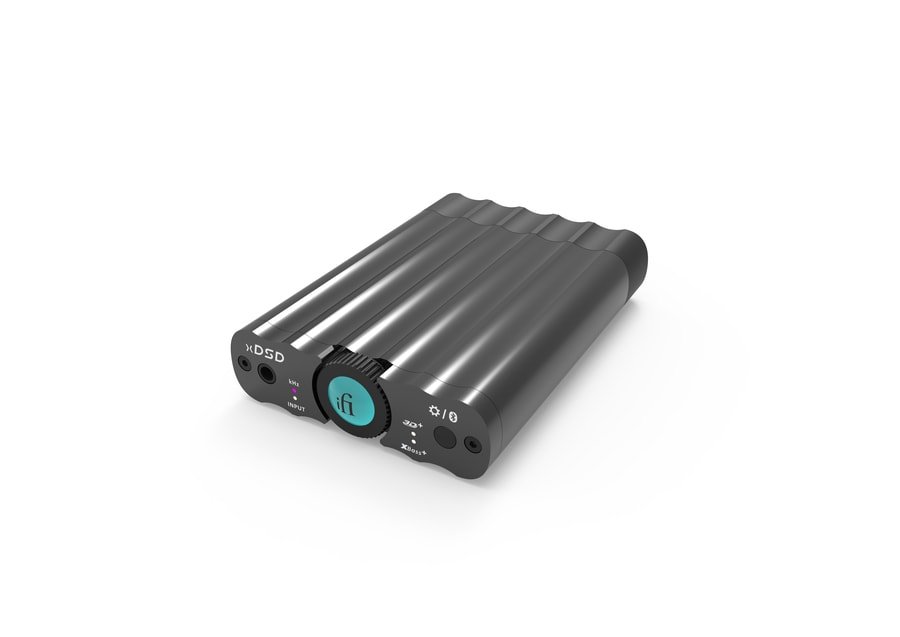
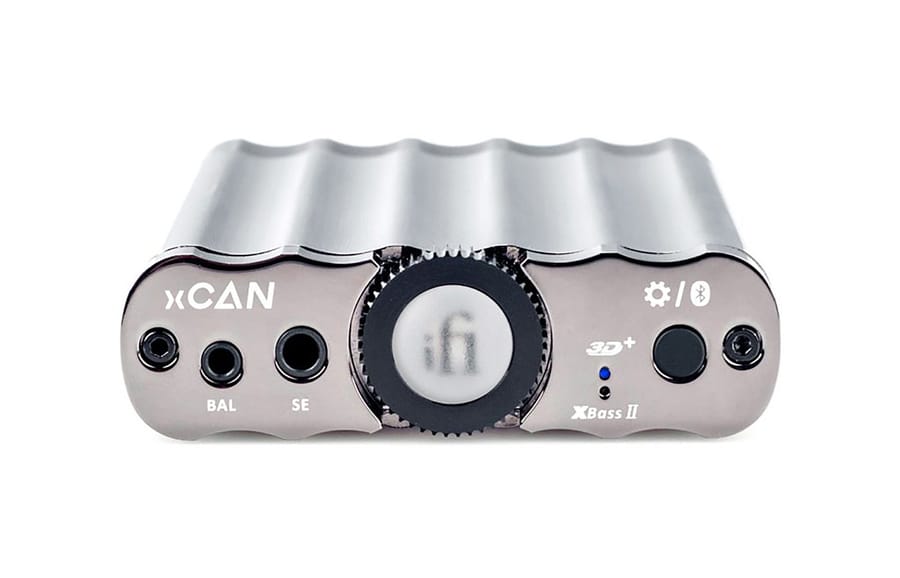


















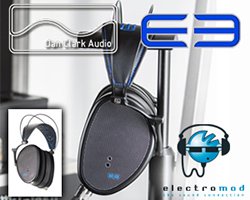












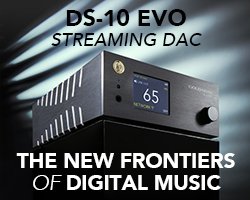


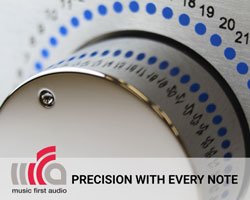













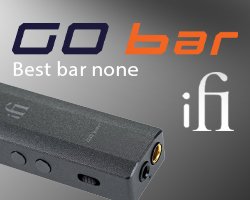






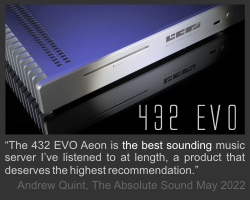

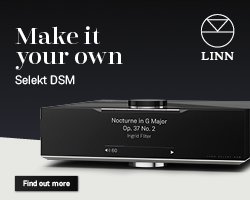
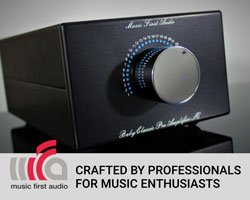







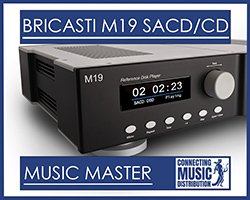







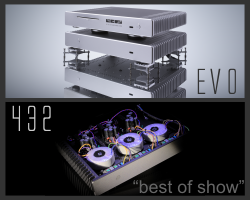



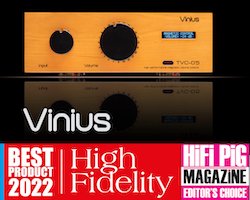


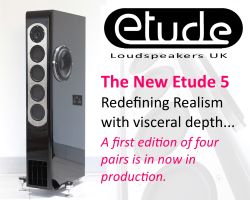
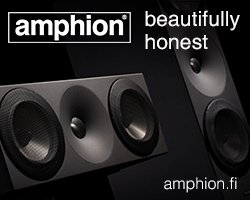
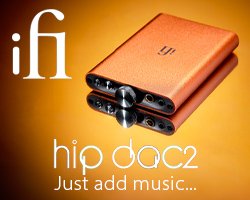

















































You must be logged in to leave a reply.